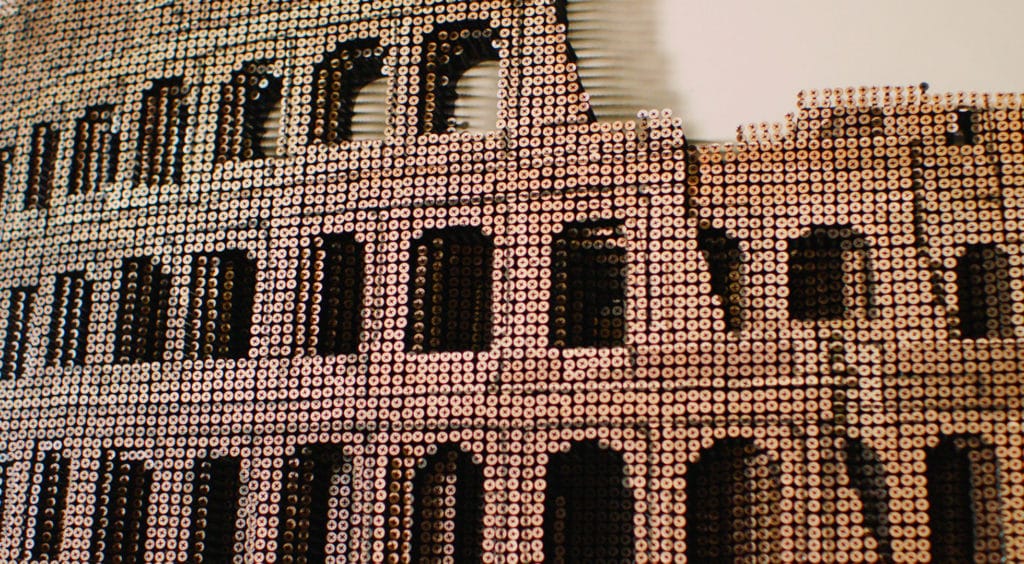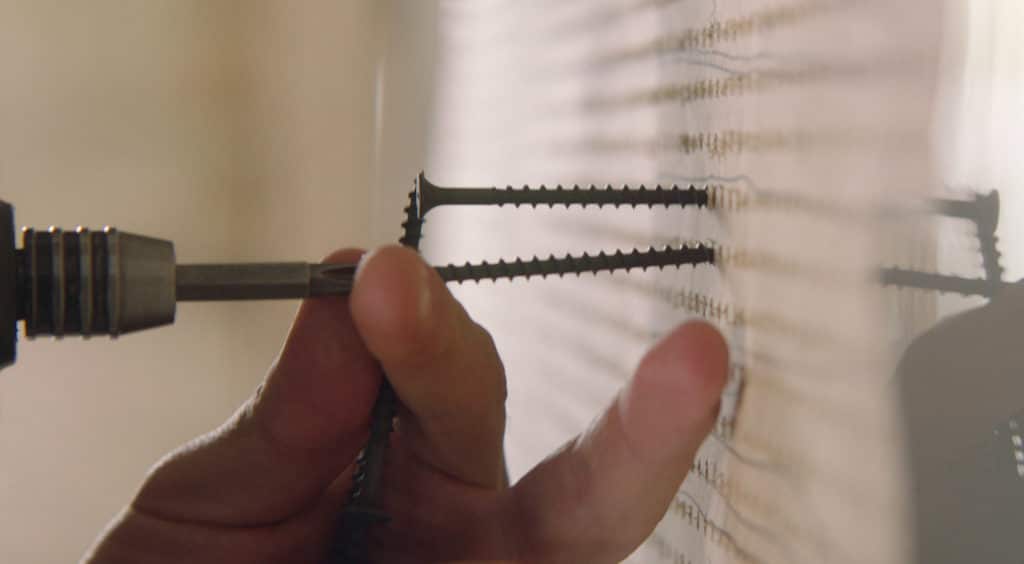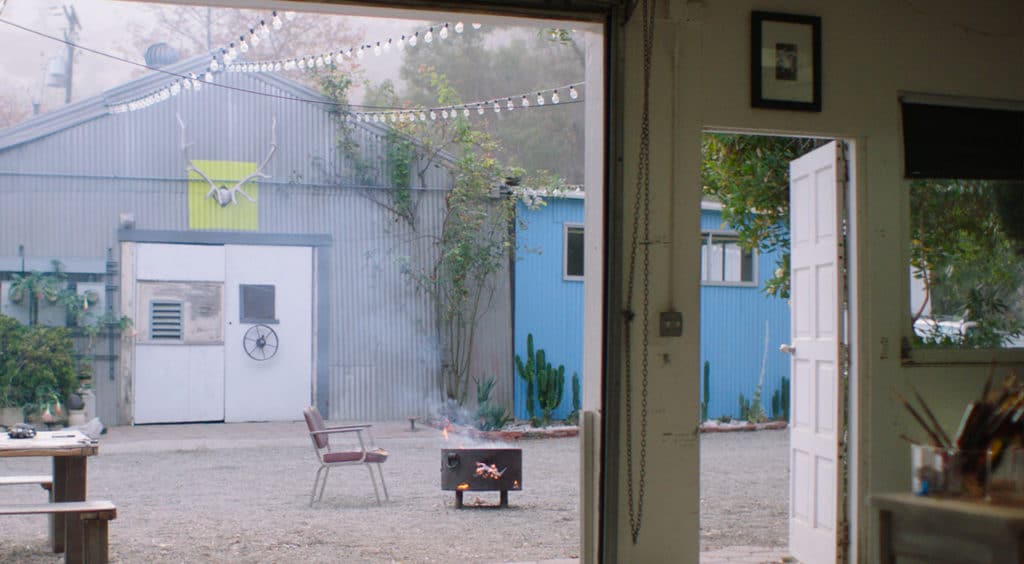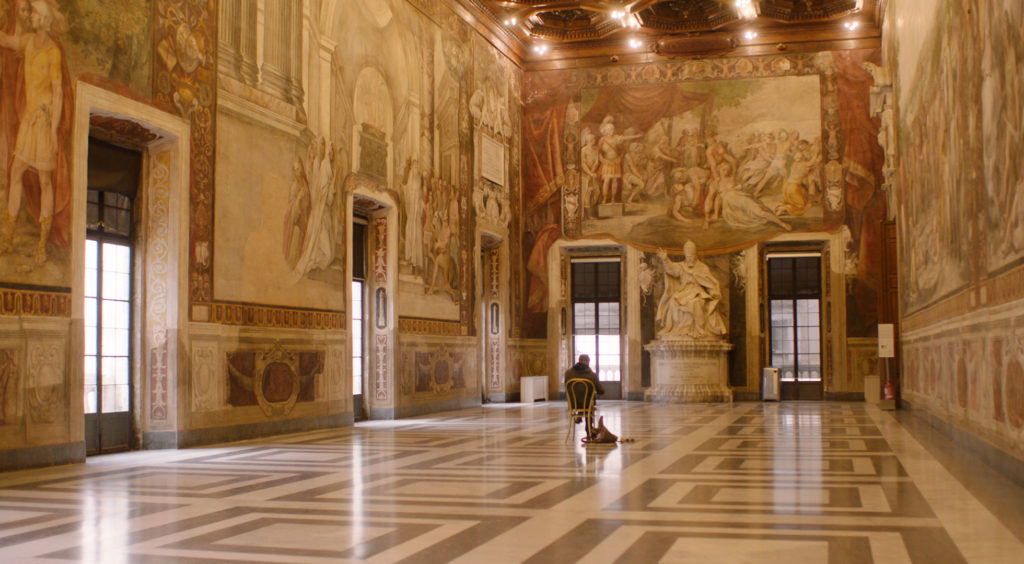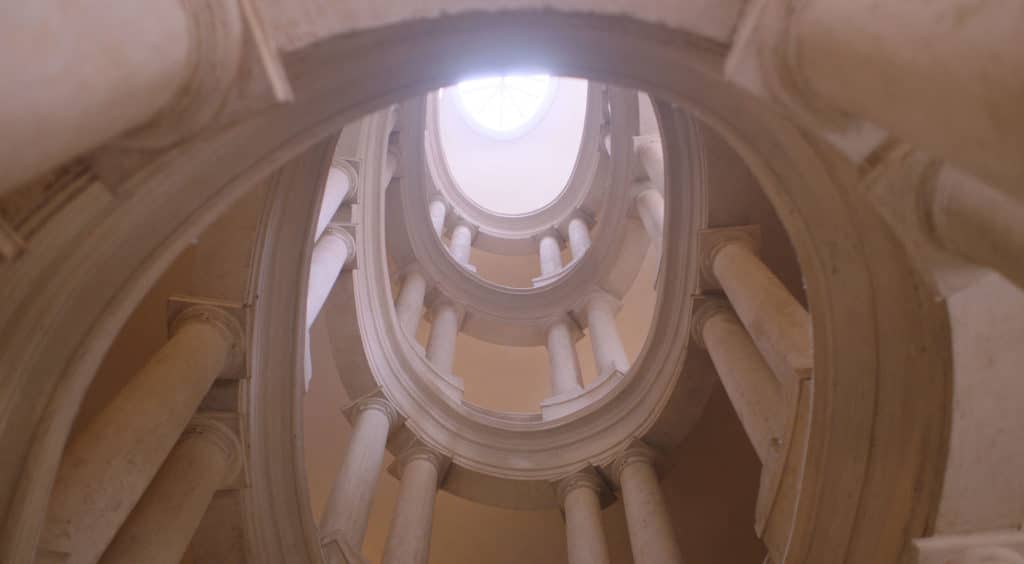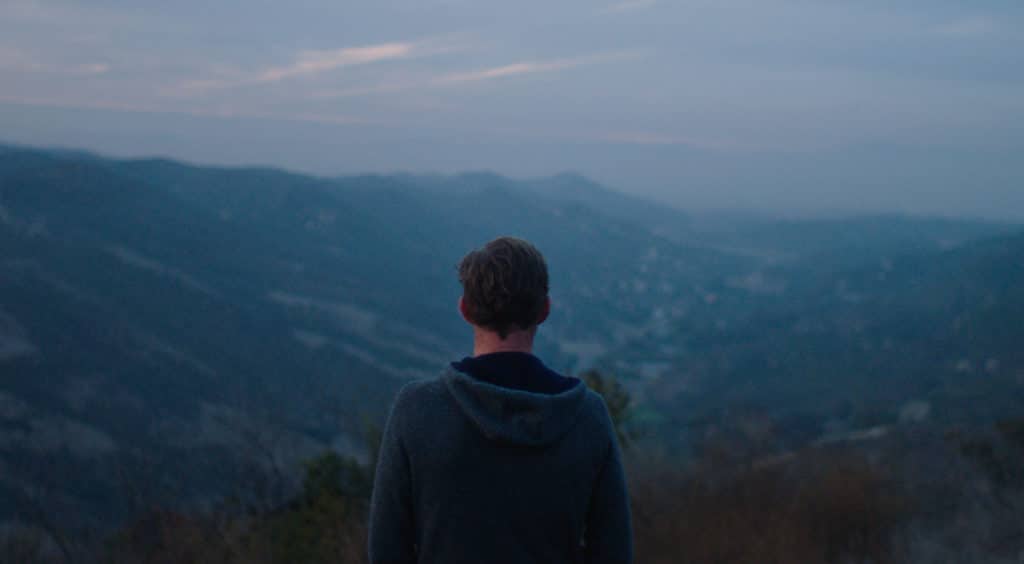Before visitors even enter artist Andrew Myers’ Laguna Beach studio, they’re immersed in his creative vision. A shiny 1963 silver Airstream trailer looms in the property’s driveway, lifted above ground on a platform, as if perched on a pedestal. Near the studio doors, his “Parts of Me Still Shine” bronze bust gazes down, characterized by gold leaves protruding from its face. And above the studio door, the stenciled letters A-R-T make clear that you’ve arrived.
Born in Germany, raised in Spain, and now building his professional art career in one of California’s most recognized art communities, Myers’ evolution as an artist has inevitably been influenced by his experiences traveling abroad and at home.
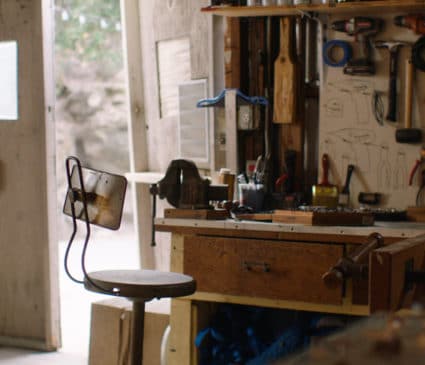
In the beginning, there was Spain. The seeds of Myers’ love of art were planted there while he sat in the Plaza Mayor of Ciudad Real.
“I spent hours, awe-inspired, observing the details of this giant sculpture in the plaza of a conquistador on a horse,” he recalls. “I wondered, ‘Who made that? How did they make it? Why did they make it?’”
Myers found himself observing the details of art, and specifically sculpture, with deep inquisitiveness as he continued to spend time in Ciudad Real.
However, the vision of himself as an artist wouldn’t take root until years later when he found himself halfway across the world in the budding creative community of Laguna Beach. It was along this dramatic coastline that inspiration unexpectedly struck.
“I remember first visiting Laguna Beach, driving through Laguna Canyon and arriving at the beach to find it sunny, warm, and 75 to 80 degrees in December. I decided then, after living several months in Seattle, where it had been raining every day, that I was moving to Laguna Beach.”
Months after arriving Myers was driving through Laguna Canyon and, on a whim, stopped at Laguna College of Art + Design (LCAD) to take a tour of the school. The experience struck a chord. Yet with no prior art experience, he would have to enroll in a development program for a few years.
Myers persisted and was ultimately awarded a half-scholarship to the school.
He started immediately, and after attending for three years, he became a became a full-time artist. Today his studio sits mere steps from LCAD.
Myers’ European upbringing, his unconventional entrance into art school and his career arc all came full circle when Myers traveled with Marriott back to Europe, to the art-rich city of Rome.
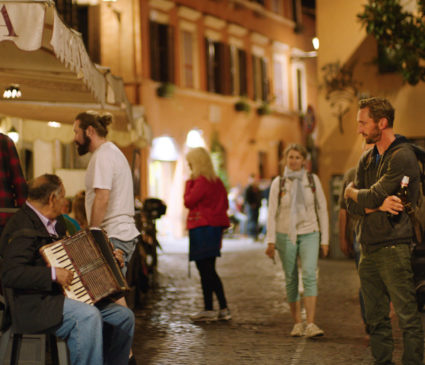
I wanted to rebuild the 2,000-year-old Colosseum, but in a completely different way, and in a way that only I could.
ANDREW MYERS
Ultimately, Myers’ goal was to return home to create an original piece of work inspired by his experiences in the Eternal City. “Cultures are inspiring to me, giving me a sense of awe,” Myers says.
Rome is where so much traditional sculpture has its roots and where Myers’ artist heroes honed their craft.
But when creating his own artwork, Myers didn’t want to create a classic Roman sculpture. He envisioned a Rome-inspired piece of work that explicitly had his fingerprint on it.
“I wanted to rebuild the 2,000-year-old Colosseum, but in a completely different way, and in a way that only I could,” he says.
And nothing characterizes Myers’ uniqueness as an artist more than 3D Screw Art, his own take on sculpting, which he developed years ago.
“The catalyst for transitioning to screw art was that I wanted to create art that I could completely control from start to finish.” For Myers, that wasn’t something that he could achieve with traditional sculptures, which depend on foundries to cast a work after handing over original pieces of clay.
He wanted to control and shape the artwork from inspiration to completion.
“One day, in my studio, I decided that I wasn’t going to pick up standard art tools like clay or a paint brush to create a new piece of art, but rather begin simply with random objects and see what I could come up with.” Those random objects turned out to be screws.
“I realized that if I put screws close enough together, I could shape it like I shaped anything else — but only to discover that it looked like that childhood pinscreen toy, which conformed to your hand and other shapes you pressed against it,” Myers says.
He then realized that if he painted it, not only would it produce a 3-D painting, but it would create a living piece of art that could be manipulated with movements.
“After putting the final touches on my first piece of screw art, painted on 6,000 screws inserted into 6,000 holes, I stepped back and realized that it was one of the proudest moments of my career,” he says.
Year later this technique characterizes the majority of Myers’ art, including that which he created after his trip to Rome, a journey that had been in the back of his mind for some time.
OLD MEETS NEW
How the Eternal City inspires
“My journey to Rome really began years prior, in art school, studying Bernini, observing the details, subtleties and perfection of his sculptures, all made in marble, and realizing that I could never be that good. However, while I couldn’t recreate the perfect image, I could create art that elicits a feeling and emotion.”
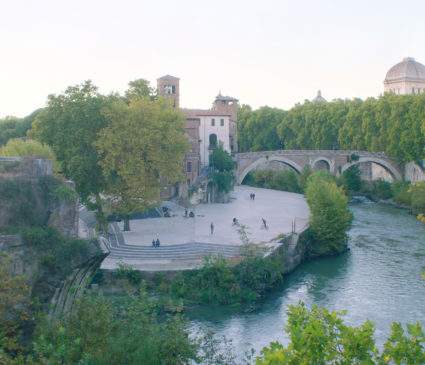
I stepped back and realized that it was one of the proudest moments of my career.
ANDREW MYERS
For Myers, traveling to Rome would allow him to be immersed in the art of his idols, like Bernini. “It was my dream to see their works in person, to walk the same streets they did and experience that sense of history. It was awe-inspiring.”
Upon returning to Laguna, Myers translated the wonder he felt into sculpture: a free-standing screw art version of the Colosseum that showcases the iconic structure, giving it the pedestal it deserved, Myers explains.
The piece required Myers to place thousands of screws closely together and paint them in his unusual style while still honoring the tradition of the Colosseum, from the impeccable details of its arches to its partially intact exterior wall.
He hopes when people view it, the piece and its detail evoke as much emotion as viewing the actual Colosseum in Rome.
“It’s amazing how something as simple as a screw can elicit the emotional response it does — and now to be able to do that with the Colosseum, a place that’s elicited such an emotional response for centuries,” Myers says.
This, after all, is the purpose of Myers’ work: to use art as a representation of places and cultures he’s encountered, inspiring in viewers a sense of awe like the world has inspired in him. As Myers puts it, “Art is the translation of an individual.”
